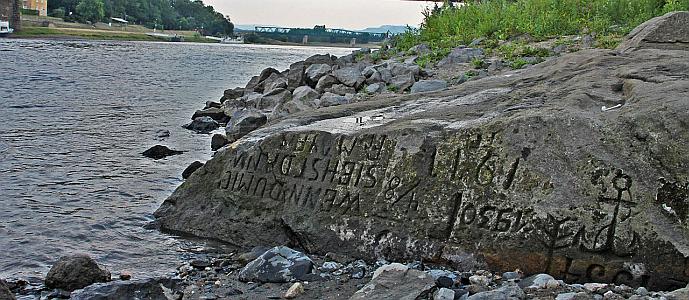
Rhine river at low water levels in Bonn, Germany, August 16, 2022. Photo: REUTERS/Benjamin Westhoff
Extreme drought has dramatically lowered water levers in major European rivers, including the Rhine, Elbe, Loire, Danube, and Po. On the Rhine, river depths have dropped close to levels seen in the record drought of 2018. The shallow water resulting have prevented many vessels from navigating the critical European shipping route fully loaded. Barges are operating at roughly 25 % of full load capacity to avoid running aground. Experts warn that the low water on major rivers could significantly damage Germany’s economy.
The Guardian notes that the Rhine, which runs about 760 miles from the Swiss Alps to the North Sea, is the second largest river in central and western Europe after the Danube. The majority of nearly 200 million tons of cargo shipped on German rivers – from coal to car parts, food to chemicals – is transported on the Rhine.
Its dangerously low levels recall the drought that shut it down for around six months in 2018. Cologne’s Waterway and Shipping Authority has said the “unusually low levels” for this time of year means barges have had to reduce their cargo “in order to be able to navigate the river”. This increases prices and reduces the speed with which goods can be transported.
Of major concern, as Germany braces itself for a winter of energy rationing due to an 80% reduction in gas flows from Russia, is the knock-on effect the depletion in river traffic could have on energy output.
Emerging Hunger Stones
While the consensus attributes the current drought to climate change, periods of drought have plagued European for centuries. In recent weeks, so called hunger stones, (German: Hungerstein), have emerged from the river bottoms as reminders of past dry spells. Most were placed in Germany and in ethnic German settlements throughout Europe in the 15th through 19th centuries. Their name memorializes droughts over the centuries that usually have been followed by starvation from failed crops.
One of the most famous to recently emerge from the Rive Elbe in Děčín, the Czech Republic is a stone with a date of 1616, inscribed with the phrase, “Wenn du mich siehst, dann weine” (“If you see me, weep”). The stone itself is believed to date from at least 1417, although carvings from the earlier dates are no longer legible.

Hunger Stone in the River Elbe
Thanks to David Rye for contributing to this post.

A serious question. What was causing the issues in 1417 and later before global warming? Volcanic activity? Sun spot activity? ??